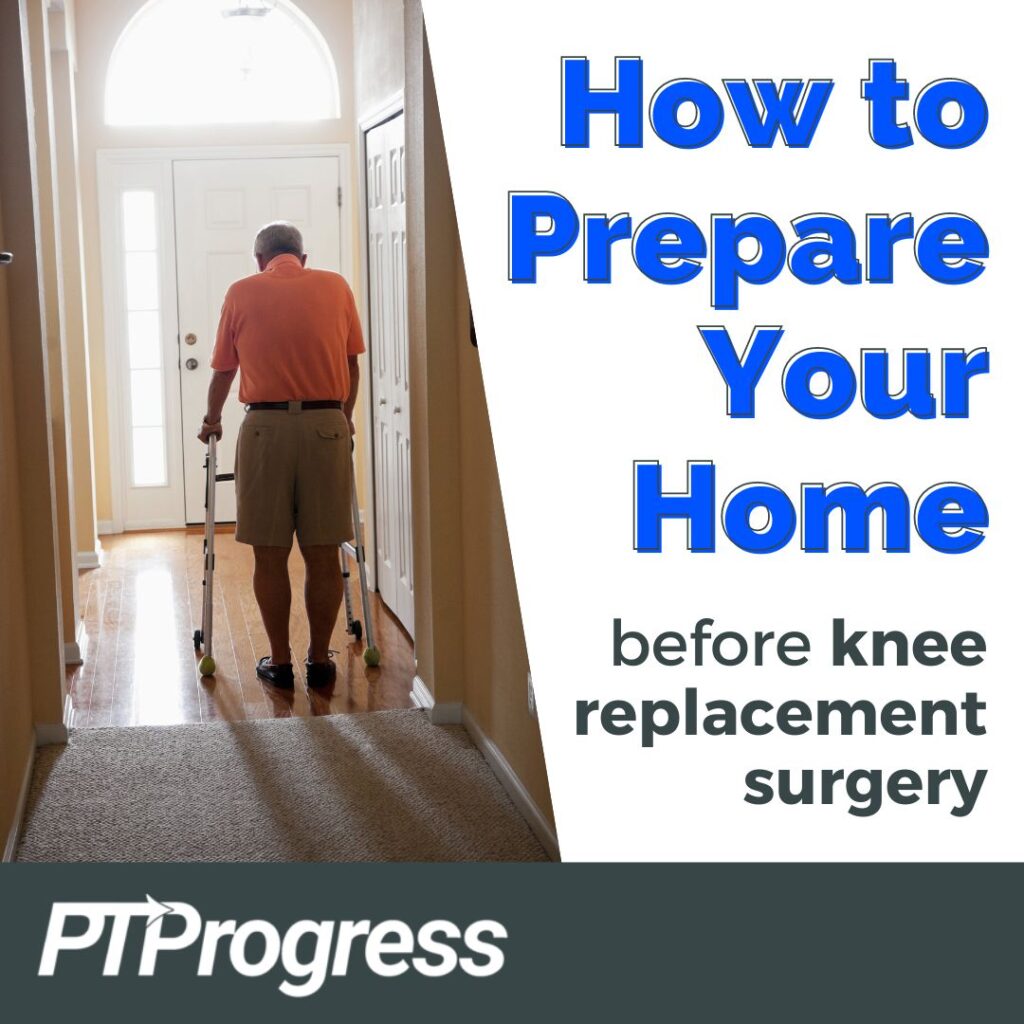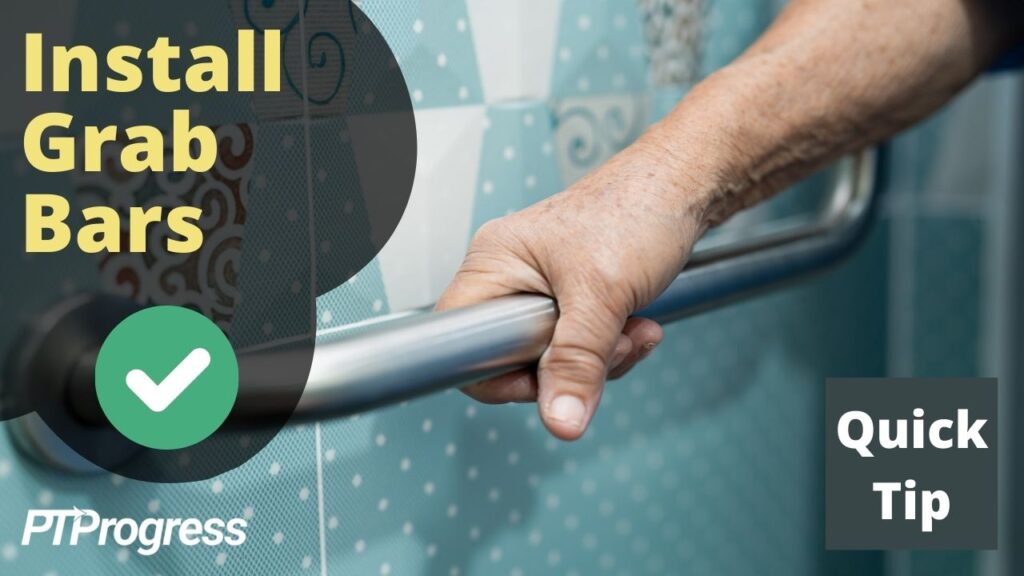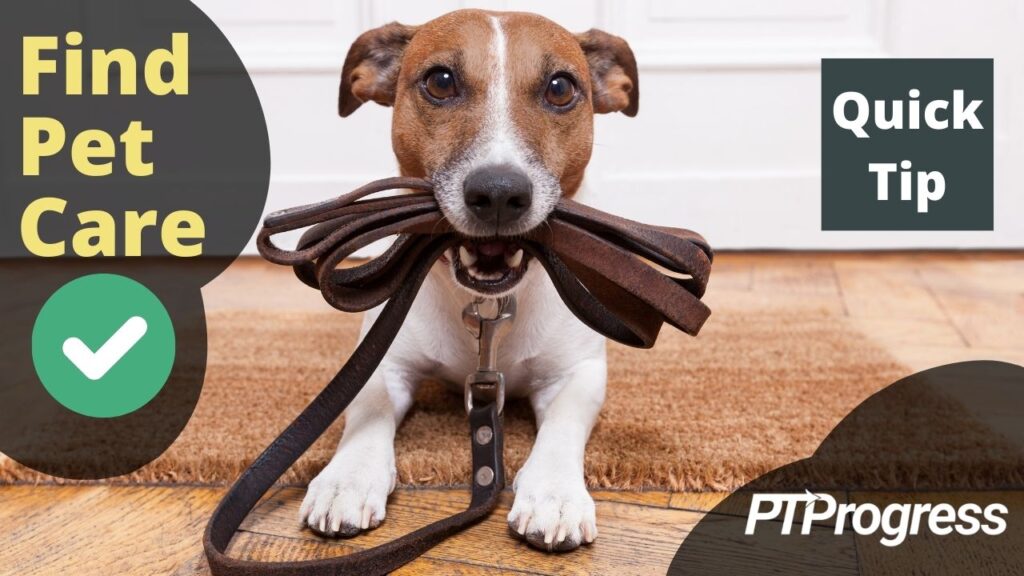
Knee replacement surgery is a major operation that can really upend your life for a few weeks. You may be able to start walking without an assistive device within six weeks, but the road to that milestone, unless paved with smart preparation, could be unexpectedly inconvenient. As a physical therapist, I love helping my patients rebound from surgery and restore movement and function. Preparing one’s home before surgery can rule out many common setbacks and smooth the road to recovery.
Preparing Your Home for Knee Replacement Surgery
For most people, knee replacement surgery is a quick operation. Don’t expect a long hospital stay; you may be able to head home after just a day or two. For a seamless transition, it’s essential that you prepare your home in advance. Below are 10 steps I tell my knee replacement patients to follow in the days and weeks before surgery.
Practice Using a Walker
It may feel silly, but this step can be enormously useful. Besides, you’ll need to have a walker at home ready to go. Why not test it out and make sure it’ll work for your space?
Walk through each area of your home, from your car to your bed to your bathroom, all while wielding a walker. Ensure the apparatus is easy to use in your space and can fit through all the essential doorways. If it doesn’t, you may be able to gain clearance for the walker by removing an interior door off its hinges—but you’ll want to do this before surgery, not after.
Remove Trip Hazards

Practicing using a walker will help you spot any obstacles or trip hazards that could cause issues later. And tripping and falling is the last thing you want to do on a freshly-replaced knee.
Trip hazards can take many forms. Look out for throw rugs, electrical cords, dog beds, toys, stray shoes, and anything else that can get in your way. If your housemates are notorious for leaving items on the floor, be sure to emphasize the dangers of tripping and ask them to help you keep the pathway clear.
Rearrange Furniture
Sometimes it takes more than removing a trip hazard to make the path clear. You may need to rearrange your furniture to better suit post-surgery ambulation. Your walker walkthrough should shed light on whether this is needed.
But shifting some furniture around can provide another benefit besides wider wayfinding. After your surgery, you’ll undergo several weeks of physical therapy, and a crucial component of your recovery will be the therapy homework you perform in between sessions. To better aid those efforts, consider placing a solid kitchen chair in your living room so you can use it for your exercises. Your couch won’t do. It may be soft and comfy, but it can’t offer the support you’ll need. And most patients find it more difficult getting up from a low sofa than from a firm dining chair.
Improve Bathroom Accessibility
Another seat that can be hard to get up from is the toilet seat. Older toilets are notoriously low to the ground, and there’s typically no armrests on a porcelain throne. Make your life easier by finding an elevated toilet seat to use during your recovery time.
For more bathroom seating options, consider adding a shower seat as well to help you offload your knee while you’re in and out of the shower.
Install Handrails and Grab Bars

When you need a hand easing in and out of a chair, a grab bar can be a lifesaver. Many patients install these in the bathroom, near the toilet and shower, so they can navigate without needing assistance.
But you may also benefit from well-placed grab bars and handrails elsewhere. Most houses feature handrails along the front steps, but if you typically enter your home through the garage, you may not have anything to grab onto for those couple steps up to the house. Long before you come home from surgery, install a handrail or—at minimum—a grab bar on the wall of your home that you can reach from the bottom step in the garage.
Whenever you’re installing grab bars, make sure you’re securing them to the studs in your walls. And steer clear of suction-cup grab bars, which are not weight-bearing and could give out when you need them most. You can read more about the grab bars I recommend here.
Prepare Your Vehicle
The first threshold you’ll need to cross—after the hospital doors—is not your front door or your garage door. It’s your car. And some vehicles are very difficult to get in and out of after surgery.
Large vehicles, elevated trucks and low-lying cars are notoriously difficult to enter and exit. Whatever vehicle you use, don’t forget to practice both transitions—in and out—with your walker. This will help you plan where to hold and steady yourself while pivoting into your seat.
I also recommend adjusting the passenger seat all the way back as far as possible to give yourself ample leg room. And recline it slightly before getting in so you have room to lean back and swing your ailing leg into the car.
Brighten Up the Space
I don’t mean redecorate your house—not necessarily. But lighting can play an important part in your recovery process. Poor lighting can obscure trip hazards and increase your chances of falling. So make sure there’s adequate lighting within reach of your bed or chair. You’ll also want to light the path to the bathroom so you can see where you’re going in the middle of the night.
Get Help for Your Pets

Although a beloved pet can be a tremendous source of comfort in times like this, small animals can also get in the way and make you trip and fall. For your safety—and theirs— ask a family member or friend to watch them for you. Besides, in the first few weeks after surgery, you may not be able to walk the dog or bend over to feed the cat anyway.
Complete House Chores: Cooking, Cleaning, Laundry
Let’s face it: when you get home from surgery, you’re not going to feel up to cooking. And you may not want to eat takeout everyday for the next six weeks. So plan ahead and cook some meals you can eat the few days after your surgery. If you have space in the freezer, cook a double batch so you can reap the benefits of your forethought for meals to come.
For the sake of your healing, it’s important that your house is clean. Plus, it’ll help you feel more at ease if there isn’t a pile of dirty dishes in the sink. Tidy up your space and clean surfaces to decrease the chance of infection. The day before your surgery, put fresh sheets on your bed and complete any laundry you may need for the next week or so.
Prepare Ice Packs or a Cold Therapy Machine
Recovering from a knee replacement involves handling a lot of ice. Your knee will likely experience prolonged swelling and pain from the surgery, and you’ll be under strict instruction from your surgeon (and your PT!) to keep the ice packs coming. Make sure you have at least two or three already frozen in your house before you come home. As you use each ice pack and it warms to room temperature, you can swap it out with one of the backups in the freezer.
But if you’d rather skip the ice-pack juggling act, consider buying a cold therapy machine. These powered units can deliver continuous cold therapy directly to your knee for prolonged, intermittent use. You can read more about this kind of device here.
Preparing for Knee Replacement: Final Thoughts
Preparing for knee surgery can feel overwhelming. Your body, your house, and your whole life will be affected by this operation. But 99 times out of 100, the results are more than worth it. Knee replacement surgery is wildly successful at reducing pain and restoring function in the hundreds of thousands of patients who undergo it each year. The above tips will help you make the most of your time at home and get back on your feet as soon as possible.

